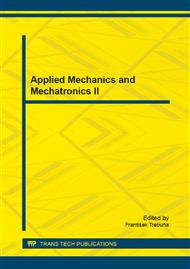p.9
p.16
p.27
p.31
p.35
p.43
p.49
p.54
p.63
Recognition of Seat Elements during Production through Image Processing
Abstract:
The primary aim of the research, whose results are presented in this article, was to investigate the process of visual identification of objects. The objects recognised under this research were passenger seats for mass transit applications. The system presented in this paper is intended to be incorporated in the production process control system. The problem under analysis is based on the need to recognise (identify) an object located in the process area of the machine before proceeding with the process. Neural network was chosen as the adaptive element due to a high degree of similarity between the semi-products. The function of the network was to check if correct element had been fed. The input data fed to the network was the information from processing the photo images of these elements. The results of research as presented in this article are based on a limited set of elements and present the method used for solving the task of identification.
Info:
Periodical:
Pages:
35-42
Citation:
Online since:
November 2015
Keywords:
Price:
Сopyright:
© 2015 Trans Tech Publications Ltd. All Rights Reserved
Share:
Citation:


